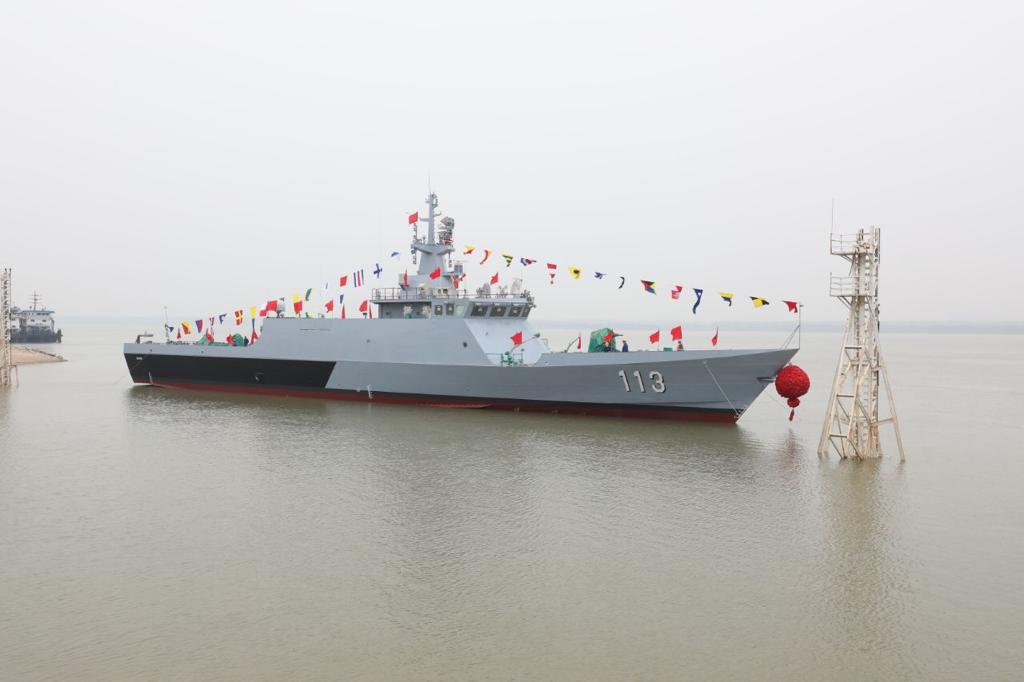With a range of nm and an endurance of 21 days, the much heavier armed Kedah Class (MEKO 100) is way better capable to chase away chinese illegal fishing boats and chinese coast guard ships, than these 69 meter long Keris class armed with only a 30 mm gun and with a range of only 2000 nm and an endurance of 15 days.
While you rightly point out the difference in the two classes of ships, the Malaysian Navy will have to use both classes to conduct patrols — as an example, it was reported that 1 named Malaysian navy ship was out on patrol in the South China Sea for 250+ days, a year, in an attempt to watch Chinese intrusions in these waters — which leaves too little time for maintenance and training.
Chinese coast guard (CCG) vessels spent 70% of the past year patrolling in a tract of the South China Sea claimed by Malaysia, an American think tank says. Unlike the recent Indonesian response to CCG intrusions, Malaysia have traditionally done little to push back. The coast guard presence, especially long-term for a Chinese mission in the widely disputed South China Sea, followed by Malaysia’s muted response gives China an ever-stronger upper hand. The mission to Luconia Shoals appears aimed at proving China’s heft over Malaysia and at locking in Chinese claims to about 90% of the sea, scholars say. Malaysia is the most active developer of undersea oil and gas among the governments with claims in the 3.5 million-square-kilometer waterway, according to U.S. Energy Information Administration data. At least one CCG vessel was broadcasting from Luconia Shoals on 258 of the past 365 days, the Asia Maritime Transparency Initiative under U.S. think tank Center for Strategic and International Studies said in a report 26 Sep 2019. Most of the shoals are under water, but a reef called Luconia Breakers may include a small sandbar that protrudes above water at high tide, the think tank initiative says. China started patrolling around Luconia Shoals in 2013, according to the report.
In related news, on 12 Dec 2019, Malaysia formally filed a
submission seeking clarity on the limits of its continental shelf beyond the 322 kilometre (200 nautical miles) exclusive economic zone (EEZ) in the disputed body of water claimed by several countries in the Southeast Asian region. The move has angered China, which claims "historic rights" over all of South China Sea. IMHO, not enough hulls in the water to provide security for their EEZ patrols by all Malaysian maritime agencies and their navy — not just to guard against intruding foreign fishing boats but also to prevent Philippine militants to cross over and kidnap for ransom Malaysians, in Malaysian waters.
The CCG has bigger ships and resupply bases in the South China Sea to maintain 24/7 watch over each and every Malaysian naval vessel they send on patrol. They are hopelessly out numbered and over matched, if the PLA(N) is factored in. A major strategic achievement of President Xi has been his ability to learn how to push the boundaries to the limit without fatally overstepping. China’s management of the South Luconia Shoals incident with Malaysia is a case in point. In September 2013, a Chinese Coast Guard (CCG) vessel dropped anchor in the Malaysian-claimed shoals, sparking hearings in Malaysia’s parliament and extensive complaints from government officials. The CCG finally withdrew the vessel in November 2015, just before Malaysia hosted the ASEAN and East Asia Summits. This adroit timing prevented the issue from becoming a central feature of public discourse during the high-profile summits, which could have led to significant momentum being garnered against China. The salient Chinese achievement was that CCG vessels returned to the shoals almost immediately after the summits.
In this regard, I wish the Malaysians good luck and they will have to stand alone to enforce their own EEZ claims.





